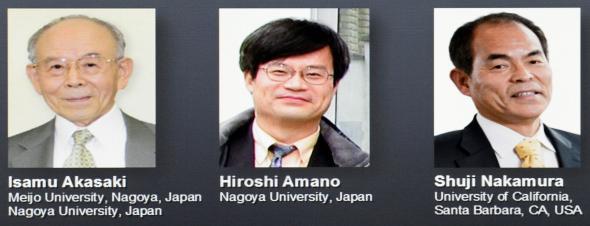LED bulbs are all the rage these days because they’re efficient, last for years—even decades—and give off warmer light than compact fluorescent bulbs. But they owe their existence to three materials scientists who solved the mystery of blue LEDs in the early 1990s.
In the spirit of Alfred Nobel the Prize rewards an invention of greatest benefit to mankind; using blue LEDs, white light can be created in a new way. With the advent of LED lamps we now have more long-lasting and more efficient alternatives to older light sources. … Incandescent light bulbs lit the 20th century; the 21st century will be lit by LED lamps.
As the Royal Swedish Academy explained in its press release about the award:
Along with his work on the blue LED, Nakamura is also known for crusading to get additional compensation for the discovery, and generally advocating for employees’ intellectual property rights. When an individual invents something as part of R&D for her employer, she generally gives over the rights to the patent in exchange for “reasonable” compensation. But since blue LEDs were kind of, you know, important going forward in the electronics industry, Nakamura brought suit against Nichia Corp. in 2001 for paying him $180 for the patent in the early 1990s.
In 2004 the Tokyo District Court ruled that Nichia could have earned more than $1.1 billion in profits from blue LEDs since they were first marketed in 1993, and awarded him $180 million in compensation from Nichia. That plus a Nobel Prize seems like pretty “reasonable” compensation.
